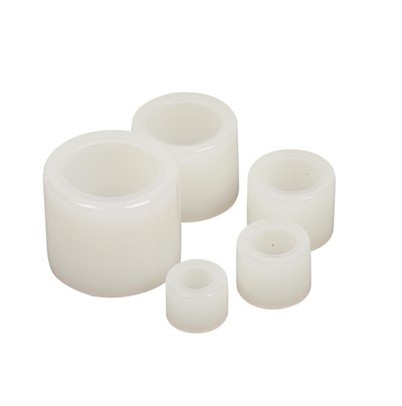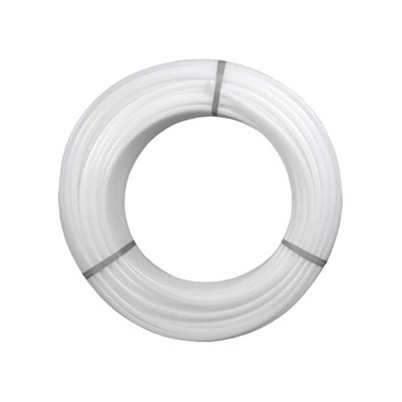Introduction to Polyethylene Pipes
Leave a message
Certain types of chemicals can cause chemical corrosion, such as corrosive oxidants (concentrated nitric acid), aromatic hydrocarbons (xylene), and halogenated hydrocarbons (carbon tetrachloride). This polymer is non hygroscopic and has good water vapor resistance, making it suitable for packaging purposes. Polyethylene has excellent electrical properties, especially its high dielectric strength, making it very suitable for wires and cables. Medium to high molecular weight grades have excellent impact resistance, even at room temperature and low temperatures of -40F.
Polyethylene can be manufactured using a wide range of different processing methods. Including sheet extrusion, film extrusion, pipe or profile extrusion, blow molding, injection molding, and rotational molding.
Extrusion: The grade used for extrusion production generally has a melt index of less than 1 and a MWD of medium to wide. During the processing, low MI can achieve appropriate melt strength. Wider MWD grades are more suitable for extrusion molding because they have higher production speeds, lower die pressure, and reduced melt fracture trends.
Polyethylene has many extrusion applications, such as wires, cables, hoses, pipes, and profiles. The application range of pipes ranges from small cross-section yellow pipes for natural gas to thick walled black pipes with a diameter of 48 inches for industrial and urban pipelines. The use of large diameter hollow wall pipes as substitutes for rainwater drainage pipes and other sewer pipelines made of concrete is growing rapidly.
Plate and thermoforming: The thermoforming lining of many large picnic type refrigerated boxes is made of PE, which has toughness, light weight, and durability. Other sheet materials and thermoformed products include mudguards, tank liners, pan protective covers, transport boxes, and cans. A large and rapidly growing application of sheet materials is plastic film or pool bottom village, which is based on the toughness, chemical resistance, and impermeability of MDPE.
Blow molding: More than one-third of the polyethylene sold in the United States is used for blow molding purposes. These range from bottles containing bleach, engine oil, detergents, milk, and distilled water to large refrigerators, car fuel tanks, and cans. The characteristic indicators of blow molding grade, such as melt strength, ES-CR, and toughness, are similar to those used for sheet and hot forming applications, so similar grades can be used.
Injection blow molding is typically used to manufacture smaller containers (less than 16oz) for packaging drugs, shampoo, and cosmetics. One advantage of this processing process is that the production of bottles automatically removes edges and corners, eliminating the need for post processing steps such as general blow molding. Although there are some narrow MWD grades used to improve surface finish, medium to wide MWD grades are generally used.
Injection molding: Polyethylene has countless applications, ranging from reusable thin-walled beverage cups to 5-gsl cans, consuming 1/5 of domestically produced polyethylene. Injection molding grades generally have a melt index of 5-10, with grades with lower toughness and higher processability. Uses include thin-walled packaging materials for daily necessities and food; Resilient and durable food and paint cans; High resistance to environmental stress cracking applications, such as small engine fuel tanks and 90 gal garbage cans.
Roll forming: Materials processed using this method are generally crushed into powder material, allowing it to melt and flow during thermal cycling. Rotational molding uses two types of PE: universal and cross-linkable. General grade MDPE/polyethylene typically has a density range of 0.935 to 0.945g/CC, with a narrow MWD, giving the product high impact resistance and minimal warping. Its melt index range is generally 3-8. Higher MI grades are usually not applicable as they do not possess the expected impact resistance and environmental stress cracking resistance of rotational molded products.
High performance rotational molding applications utilize the unique properties of its chemically crosslinkable grade. These grades have good flowability in the first stage of the molding cycle, and then cross-linked to form their excellent resistance to environmental stress cracking and toughness. Wear resistance and weather resistance. Crosslinkable PE is only suitable for large containers, ranging from 500 gal transportation of various chemical storage tanks to 20000 gal agricultural storage tanks.
Thin film: Polyethylene thin film processing generally uses ordinary blow film processing or flat extrusion processing method. Most PE is used for thin films, and both general low density polyethylene (LDPE) or linear low density polyethylene (LLDPE) are available. HDPE film grade is generally used in places that require superior tensile strength and excellent impermeability. For example, polyethylene film is commonly used in commodity bags, grocery bags, and food packaging.







